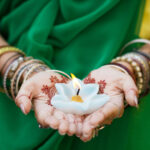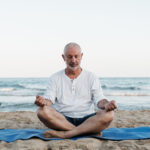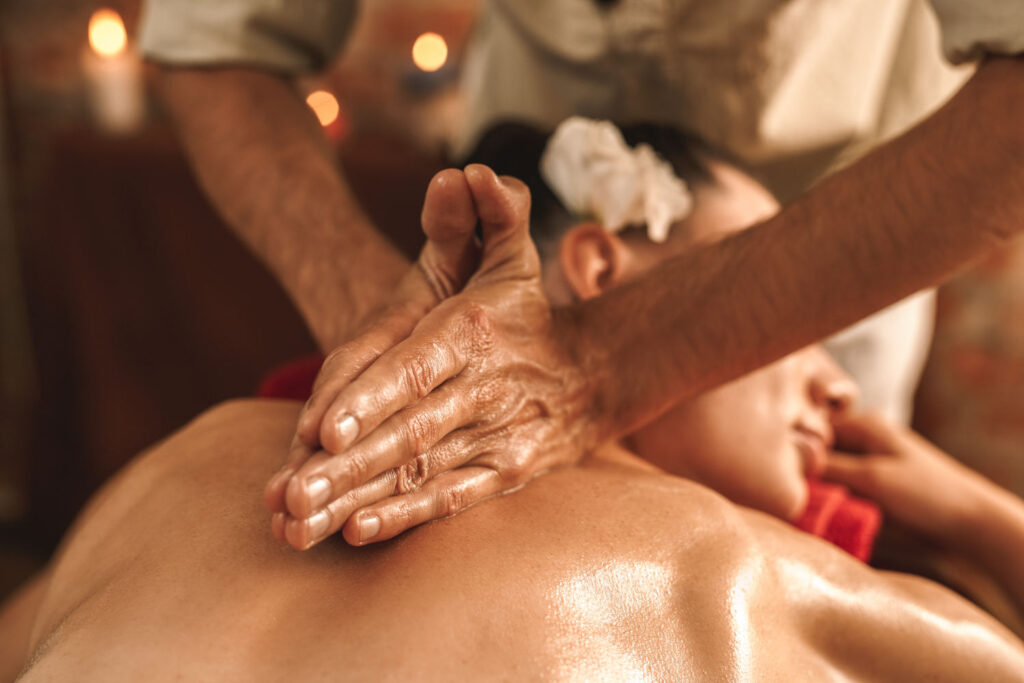Exhausted, tense, out of balance inside? The Abhyanga massage gives you deep regeneration through warm oil, rhythmic strokes and thousands of years of Ayurvedic knowledge. It calms your nervous system, strengthens your immune system and balances your energy. Unlike Western techniques, it has a holistic effect – on body, mind and soul. Treat yourself to this ritual of self-care and feel how you find your way back to your center.
The most important facts in brief:
- Holistic effect: Abhyanga not only harmonizes muscles and tissue, but also balances the energies in the body and strengthens the immune system.
- Individual approach: Different oils and massage techniques are used depending on the constitutional type (Vata, Pitta or Kapha).
- Easy to use at home: With the right instructions, you can also experience the beneficial effects of the Abhyanga massage yourself.
- Note contraindications: Classic Abhyanga should be avoided in the case of acute infections, fever or during pregnancy.
Contents
- What is Abhyanga?
- Abhyanga massage: Procedure – step by step
- The right oil for the Ayurveda Abhyanga massage
- Abhyanga full body massage – effects and benefits
- When is Abhyanga useful and when not
- Tips for use at home
- The Abhyanga massage in the Ayurvedic tradition
- How Abhyanga massages support your Ayurveda treatment
- Frequently asked questions
What is Abhyanga?
Abhyanga is a classic Ayurvedic full-body massage that is performed with specially heated oils. The term Abhyanga comes from Sanskrit and literally means “oiling” or “anointing”. This treatment is deeply rooted in Ayurvedic tradition and is recommended as a daily ritual to maintain good health.
In contrast to Western massage techniques, Abhyanga is not primarily aimed at relieving muscle tension, but rather at the holistic harmonization of the body’s energies. The massage follows certain stroking directions that support the flow of energy in the body and bring the three doshas – Vata, Pitta and Kapha – into balance.
A scientific study from 2011 confirms the stress-reducing effect of the Abhyanga massage. It involved 20 participants (10 women and 10 men) with an average age of around 37 years and showed a significant improvement in people with high blood pressure. After just one hour of treatment, a significant reduction in the subjective perception of stress and a measurable reduction in heart rate and blood pressure were observed.
Abhyanga massage: Procedure – step by step
The Abhyanga massage follows a structured procedure that involves the entire body. This systematic approach ensures that all areas of the body are treated and the full effect of the massage can unfold. Each step fulfills a specific purpose in the overall concept of the treatment.
Preparation and setting
Before the actual massage begins, the appropriate oil is heated to around 40 degrees Celsius. The choice of oil depends on the individual dosha type and the current season. The right mental attitude is also important: the massage should take place in a calm, mindful atmosphere, ideally in a room at a pleasant temperature.
Stroke directions from head to toe
The massage traditionally begins at the head, as this is where important energy centers (marmas) are located. The oil is first massaged into the scalp using gentle, circular movements. This is followed by the face, ears and neck. The direction of the strokes is always from the center outwards and in the extremities towards the heart.
Different intensities of pressure are applied during the Abhyanga full body massage: A very gentle massage is used on the head and face, while slightly stronger pressure can be applied to the legs and feet. The movements should always be flowing and rhythmic to promote deep relaxation.
Intensity for different doshas
- Vata types benefit from a slow, calming massage with more pressure.
- Pitta types need a cooling, gentle touch with medium pressure.
- Kapha types need a stimulating, energetic massage with firm pressure to activate their energy.
Rest and integration
After the massage, a resting phase of at least 20 minutes is essential. During this time, the oil can penetrate deep into the skin and develop its full effect. The body integrates the treatment and the nervous system regenerates completely. Ideally, a warm shower should be taken after this resting phase, using little or no soap so as not to completely remove the protective oil film.
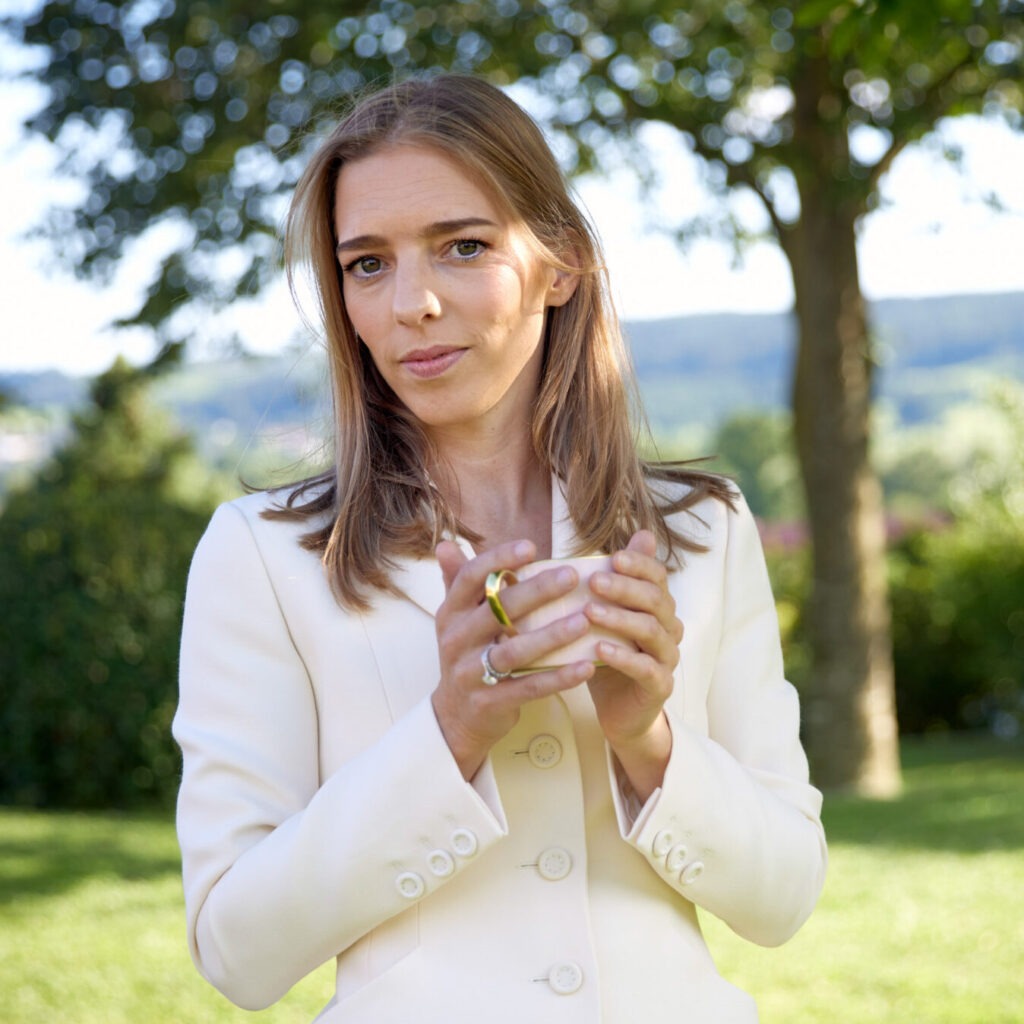
“As a Vata-Pitta type, I just can’t get enough of the Abhyanga massage – it reliably calms me down and restores my strength at the same time.”
Christina Drexler, Holistic Ayurveda Expert & Managing Director of the Ayurveda Resort Mandira
The right oil for the Ayurveda Abhyanga massage
The choice of the right oil is crucial for the effectiveness of the Abhyanga massage. Each oil has specific properties that should be tailored to individual needs and dosha type. The quality of the oil plays an important role – ideally, cold-pressed, organic oils are used.
Sesame oil
In Ayurveda, sesame oil is considered the queen of oils and is particularly suitable for Vata types. It has warming properties and penetrates deep into the skin. Its nourishing and soothing qualities help to combat dryness and strengthen the nervous system. Sesame oil is the most commonly used base oil for Abhyanga and can be used for most constitutional types.
Coconut oil
Coconut oil has cooling properties and is therefore ideal for Pitta types. It has a soothing effect on skin irritations and inflammations. Especially in hot climates or during the summer months, coconut oil provides a pleasant balance. Its light texture makes it a good choice for people with oily skin or blemishes.
Sunflower oil
Sunflower oil is a light, neutral oil that is well suited to mixed types. It has mild cooling properties and is often used as an alternative to sesame oil when the latter seems too heavy. Sunflower oil is rich in vitamin E and supports the regeneration of the skin. It is absorbed relatively quickly and does not leave a heavy oil film.
Abhyanga full body massage – effects and benefits
The Abhyanga full body massage offers a variety of positive effects on a physical and mental level. Used regularly, it can significantly improve general well-being and help prevent various ailments. The holistic effect extends to all levels of the human organism.
On a physical level, Abhyanga improves blood circulation and lymph flow, which supports the detoxification of the body. The massage strengthens the immune system and promotes the elimination of metabolic waste products. Regular use makes the skin more supple, strengthens the connective tissue and relaxes the muscles.
On a mental and emotional level, Abhyanga has a balancing and calming effect. The massage can reduce stress and anxiety, improve sleep quality and promote mental clarity. The warm oil and rhythmic movements create a feeling of security and safety, which is particularly helpful for Vata disorders such as inner restlessness and nervousness.
| Abhyanga massage | Classic massage | |
|---|---|---|
| Focus | Holistic harmonization | local complaints |
| Aids | warmed oils according to dosha type | Massage oil or lotion |
| Pressure | Gentle to moderate, depending on the body area | medium to strong |
| Effective level | Body, mind and energy system | primarily muscles and blood circulation |
| Aftercare | Rest and integration essential | Short rest phase |
When is Abhyanga useful and when not
Abhyanga has a positive effect in many life situations, but there are also circumstances in which the massage is not recommended. The correct assessment of whether Abhyanga is suitable in an individual case contributes significantly to the success and safety of the treatment.
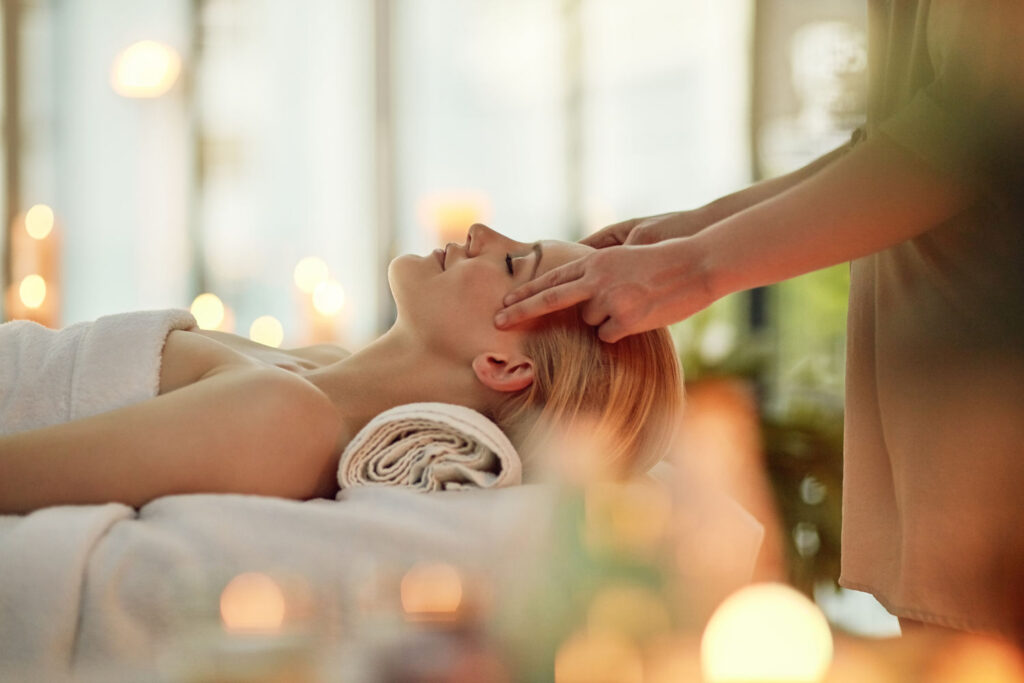
Indications
Abhyanga is particularly helpful for stress, nervous restlessness and sleep disorders. The massage can relieve tension and calm the nervous system. Abhyanga is also recommended for dry skin, joint pain and to generally strengthen the immune system.
As part of an Ayurvedic Panchakarma treatment, the oil massage supports the elimination of metabolic waste products and promotes the regeneration of the entire organism.
Contraindications
In the case of acute infections, fever or inflammatory processes, classic Abhyanga should be avoided. The oil massage is also not suitable for open wounds, skin rashes or acute injuries. An intensive full-body massage is not recommended during menstruation, nor during pregnancy (only special, adapted massage techniques are permitted here).
After a heavy meal, you should wait at least two hours before performing an Abhyanga. This gives the digestive system enough time for the massage to fully develop its holistic effect. If necessary, it is advisable to consult a medical professional beforehand.
Tips for use at home
Self-application of Abhyanga at home is a valuable addition to professional massage. With a little practice and the right techniques, you can enjoy the beneficial effects on a regular basis. Regularity is more important than perfection – even a short but consistent practice can bring noticeable improvements.
Choose a quiet, warm room for your self-massage. Heat the oil in a water bath to a comfortable temperature. Start with small amounts of oil and work your way from the head downwards. Use a soft brush with a long handle for areas that are difficult to reach yourself.
Pay attention to gentle, even movements and take your time for the massage. 15-20 minutes is ideal, but even 5-10 minutes can have a beneficial effect. Place an old towel under your feet to avoid oil stains and wear old clothes during the resting phase after the massage.
The Abhyanga massage in the Ayurvedic tradition
Abhyanga massage has a special place in the Ayurvedic tradition. It is recommended in the classical texts as a daily routine to promote health and longevity. The deep roots of this massage in the Ayurvedic art of healing reflect its comprehensive effect on body, mind and soul.
In Ayurveda, the Abhyanga massage is referred to as “Snehana”, which translates as ‘oiling’ or “love”. This double meaning illustrates the loving, nourishing character of the massage. Regular use not only cares for the body, but also cultivates a loving relationship with the self.
In traditional Ayurvedic medicine, Abhyanga is often used as a preparatory measure for deeper cleansing procedures. It helps to dissolve metabolic waste products (ama) and remove them via the excretory organs. This preparatory function makes Abhyanga an essential part of Panchakarma, the Ayurvedic cleansing treatment.
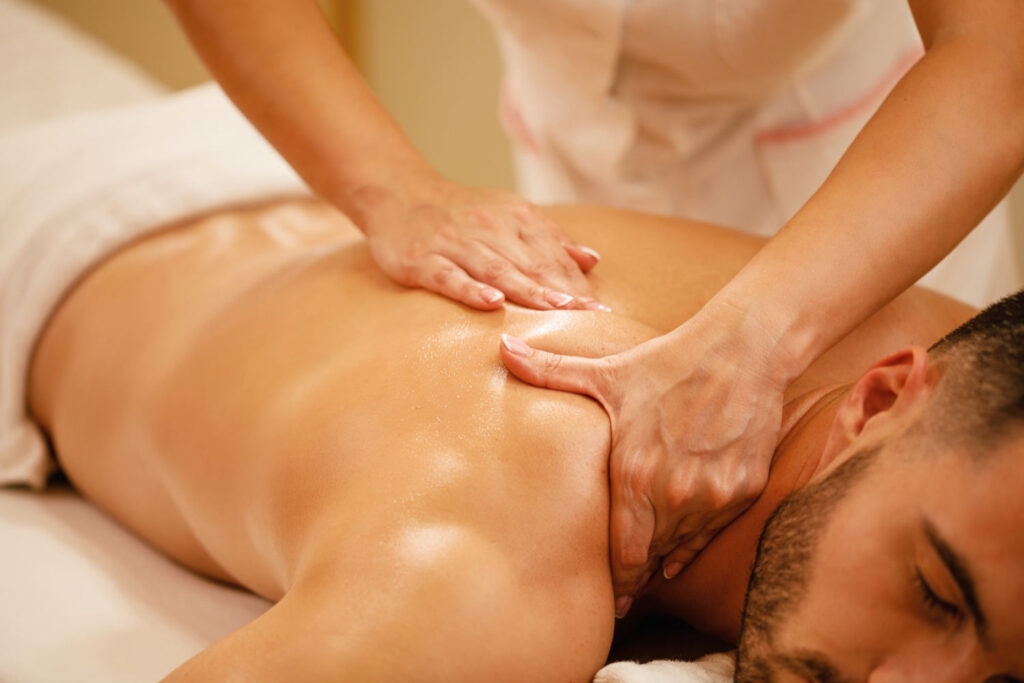
How Abhyanga massages support your Ayurveda treatment
Abhyanga unfolds its full effect as part of a holistic treatment concept. At the Ayurveda Resort Mandira, the Abhyanga massage is individually tailored to your constitutional type and your current needs. The professional execution by experienced therapists enhances the positive effects and leads to deep relaxation and regeneration.
Get off to a pleasant start now
Experience the regenerating effects of the Abhyanga massage – individually tailored, professionally performed, and deeply relaxing. Treat yourself to your personal Ayurveda retreat at the Ayurveda Resort Mandira.
Frequently asked questions
How often should you use Abhyanga?
Ideally, an Abhyanga massage should be performed one to three times a week in order to feel the lasting effects of the Abhyanga massage. Used daily, it is in line with Ayurvedic recommendations for preventative healthcare. Regularity is important – even shorter treatments develop their calming and regenerating power with constant practice.
How do you feel after an Abhyanga massage?
After an Abhyanga massage, you usually feel deeply relaxed, calm inside and pleasantly warmed through physically. The muscles are loosened, the skin feels nourished and the mind becomes clearer. Many report a feeling of balance and improved body awareness.
Can you sleep after an Abhyanga massage?
Yes, you can sleep very well after an Abhyanga massage. The calming effect on the nervous system and the relaxing effect of the oil massage promote deep, restful sleep. Especially when applied in the evening, it supports the natural readiness to fall asleep and significantly improves the quality of sleep.
Cover image: © Viktoriia – stock.adobe.com; Image 1: © Nola Viglietti/peopleimages.com – stock.adobe.com; Image 2: © Drazen – stock.adobe.com
